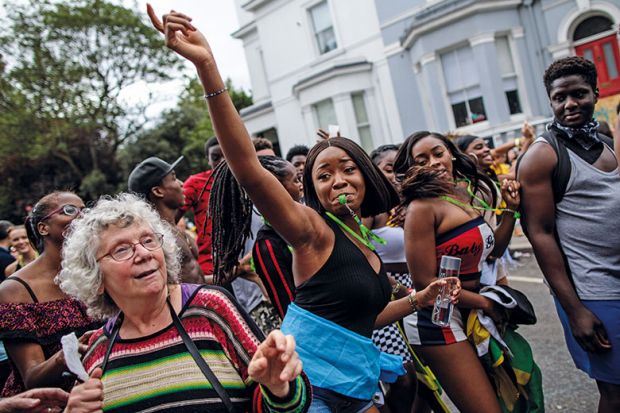Three-quarters of students from London entering higher education at the end of the next decade will be from non-white ethnic backgrounds, while more than half will be the first in their family to go to university, a new analysis says.
Modelling of demographic and tertiary enrolment trends by AccessHE, the UK capital’s widening participation network, predicts a new era of “hyper-diversity” by 2030 in which white middle-class undergraduates are increasingly the exception rather than the norm.
The report, published on 20 September, anticipates that the number of students from London entering higher education aged between 18 and 24 will increase by more than 50 per cent between 2016 and 2030, representing 36,000 extra young undergraduates.
Despite this large increase, the number of students from Indian and Chinese backgrounds enrolling is forecast to fall, owing to a slower expansion of this section of the population, and declining participation rates.
In their place, more than 10,000 students from African and mixed backgrounds are expected to be going to university by 2030.
With the number of white students predicted to increase by only 11 per cent, this means that students of non-white ethnic backgrounds will account for 74 per cent of those entering higher education. White students currently represent around 37 per cent of university entrants from the capital.
The report, by Graeme Atherton and Tuba Mazhari, adds that nearly 60,000 of the students entering higher education from London at the end of the next decade – 54 per cent of the total – are expected to be in the first generation of their family to enrol.
And, if the rate of increase in those going to university among those who are eligible for free school meals continues, the participation rate for this group will break through the 50 per cent barrier. In inner London, it would hit 60 per cent.
Dr Atherton argued that increasing diversity was a “strength” of London’s education system. “Of course, there will be challenges when the sector is changing, but we need to view these developments as a positive,” he said.
Dr Atherton said that universities in and around the capital would need to expand their capacity and adjust their subject mix and curricula to respond to increasing diversity.
More than half of all students from London who enter higher education stay in the capital, and in excess of 40 per cent of those who leave head to the south-east or east of England.
Students from non-white backgrounds are more likely to study at certain types of institution and choose particular subjects, typically in non-arts fields, so it is possible that creative disciplines could face a decline in graduates as a result of shifting enrolments, Dr Atherton explained.
Increased diversity in the student cohort would lead to growing pressure for more diversity in the academic workforce and in curricula, Dr Atherton said.
He argued that London would become increasingly distinctive within the English higher education sector and that this meant it was an issue for the sector regulator, the Office for Students.
“We haven’t seen much of a regional dimension to the OfS’ approaches,” Dr Atherton said. “The report suggests regional differences in higher education will continue to matter and become more important.”




